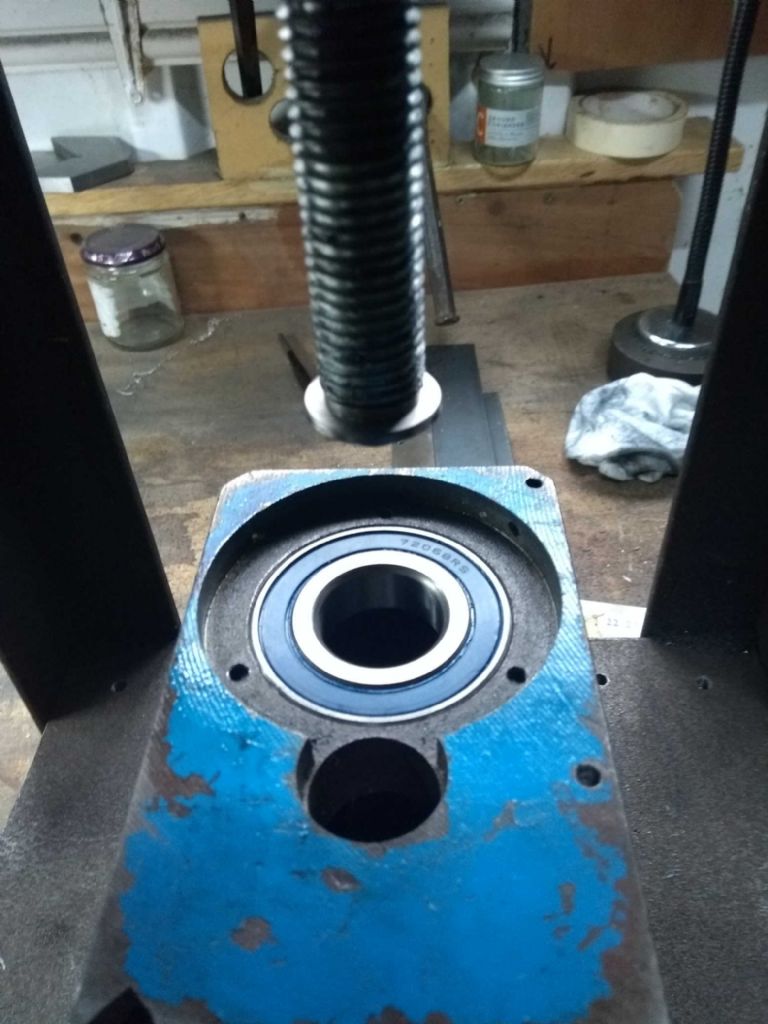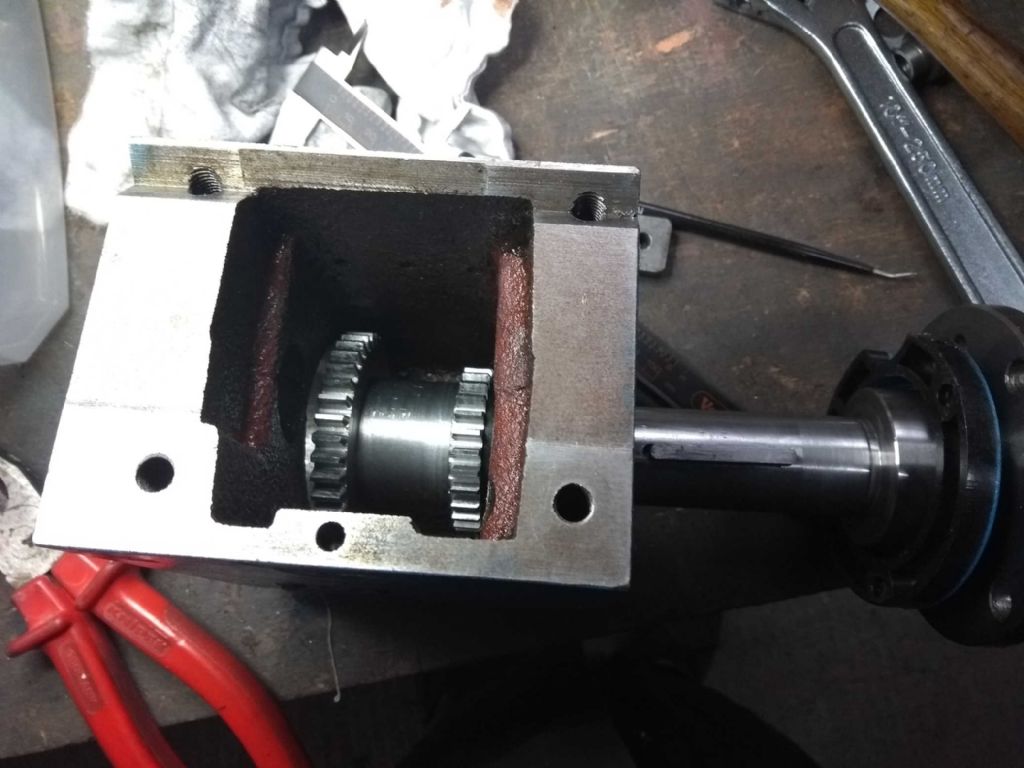Well, I finally had a chance to get back to the spindle things today and have good news and bad news.
The good news is that the polishing has worked nicely. I can press the old bearing in with relatively little effort and there are no 'twangs' as it is pressed. Hoorah!
Next, following the advice in this forum I pressed the front bearing home. This was silly and I should have applied brains.

I can see that the 'correct way would be to press in the front bearing (like this), then pull in the spindle (with the force on the inner race.
However, once the front bearing is in place there is no way to assemble the gears on the spindle.

The only way you can actually assemble the whole thing is to press the front bearing on the spindle and the put on the keyway inner spacer and gears and press the spindle in place. this means that the pressure is on the inner race with the press going in on the outer race.
So now I need to unpress the front bearing. To do that I need to make a spacer (approx 56mm diameter so that I don't damage it on the way out. If only I had a working lathe!
I think I can make a suitable spacer on the mill and cut it off on the bandsaw. But I don't have the heart to start it today!
Old Mart – your advice is well taken, but you have to know what you are doing to know what tools to make!
Iain
old mart.






